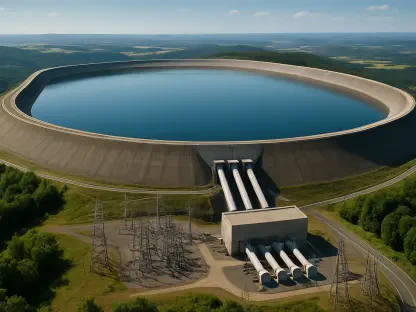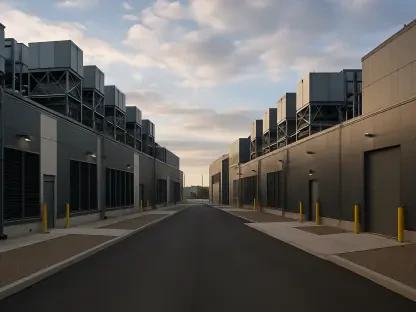The soaring environmental crises of recent years have continuously drawn attention to the critical need for practical solutions. In light of these challenges, the role of economic strategies in environmental protection has been intensively debated. This discourse gained momentum during the Environmental Defense Society’s conference in Auckland, where environmental sustainability was explored through the lens of economic interventions. The focus on how economic mechanisms could complement environmental objectives marks a noteworthy shift in prevailing strategies. Various speakers, including preeminent figures like Sir Peter Gluckman and Andrea Hinwood, delved into the complexities of merging economic principles with ecological imperatives. This shift underscores the pressing need to address global threats like climate change and biodiversity loss and questions the effectiveness of economic strategies in fostering sustainable practices on an international scale.
Bridging Economics and Environmental Sustainability
Throughout the conference, an urgent theme resounded: the pressing nature of worldwide environmental crises, encompassing challenges like climate change, biodiversity degradation, and declining water quality. Prominent speaker Sir Peter Gluckman, President of the World Science Council, addressed the rise of populism and nationalism. He warned that these political movements undermine the scientific frameworks essential for supporting environmental advocacy. Such tendencies prioritize immediate economic gains over long-term sustainability-focused agendas, diverting from the United Nations Sustainable Development Goals (SDGs). This tension between short-term economic interests and sustainable objectives raises questions about the viability of current environmental strategies and whether economic incentives can genuinely realign priorities.
Andrea Hinwood, the Chief Scientist of the United Nations Environment Programme, highlighted the alarming rate of biodiversity depletion. Over the last three to five decades, biodiversity has declined by roughly 26% per decade. Hinwood underscored that climate change remains a significant threat, though global temperatures have yet to reach the critical threshold outlined in the Paris Agreement—a 1.5-degree Celsius increase above pre-industrial levels. This critical juncture emphasizes the need for immediate action to mitigate the impending impacts of climate disruptions. The balance between respecting economic growth ambitions and remaining steadfast in environmental commitments poses ongoing challenges for policymakers and stakeholders. The conference discussions reiterated the need for cohesive strategies that acknowledge economic opportunities while ensuring a lasting ecological legacy.
Exploring Economic Mechanisms for Environmental Gains
In the New Zealand context, the Emissions Trading Scheme (ETS) emerged as a focal point for applying economic models to environmental challenges. This market-based mechanism aims to lower carbon emissions by monetizing carbon credits and fostering afforestation. However, its implementation has faced scrutiny, as unintended consequences have arisen. For instance, ETS has spurred extensive afforestation on farmland, raising concerns over land commitment to carbon forestry rather than other productive uses. Unlike production forests, carbon forests do not produce timber, limiting their utility. Simon Upton, Parliamentary Commissioner for the Environment, highlighted the need to phase out generating ETS units from new forests to achieve a balanced supply and demand, suggesting that raising the ETS price could reduce fossil fuel reliance by increasing costs.
Despite the evident effectiveness of ETS, comprehensive reform seems politically challenging. The reluctance to increase costs for fossil fuels and related products, like petrol, further complicates efforts to enhance the scheme. Nevertheless, Upton advocates for utilizing potential revenue from carbon auctions for native afforestation projects, specifically in ecologically vulnerable regions like erodible soils and Māori lands. While some view these approaches as contentious, given potential disruptions to rural communities and industries, they highlight the intricate relationship between economic interventions and environmental agendas. By leveraging financial frameworks to encourage sustainable practices, authorities can potentially foster more environmentally beneficial outcomes.
Innovative Solutions and Global Perspectives
Beyond local strategies, innovative initiatives like Westpac’s rural sustainability loans illustrate potential pathways for combining finance and ecology. Although these solutions may not receive widespread political backing, they hold promise for translating economic opportunities into environmental achievements. Ben Taylor, a senior advisor at Westpac, explained that the bank has directed substantial funds—amounting to $3.7 billion—towards rural sustainability projects. These loans require participating farms to undergo audits focused on measures like reducing methane emissions, showcasing a symbiotic relationship where agricultural businesses benefit financially and ecologically.
Adding an international dimension, Lawrence Meredith, the EU Ambassador to New Zealand, emphasized aligning economic transformations with ecological priorities. The European Union’s commitment to advancing renewable energy technologies and climate mitigation strategies serves as a benchmark for global efforts. Meredith warned that delaying environmental action could result in heightened expenses, reinforcing the argument that economic and environmental imperatives need not conflict. The interplay of political will, industry adaptations, and technological advancements underscores the potential for economic solutions to contribute significantly to environmental preservation.
Aligning Political and Environmental Agendas
Despite the conference’s broad focus on intertwining economic and environmental objectives, not all voices harmonized with this direction. Opposition MP Chris Bishop’s remarks starkly contrasted with the conference ethos by emphasizing traditional economic growth models centered on housing and infrastructure, often perceived as opposing environmental considerations. This tension illustrates the ongoing debate over how best to reconcile development and conservation. The perspective offered by the Ministry for the Environment’s Deputy Secretary, Anne Haira, added another layer to this discussion, highlighting strategic collaborations with private landholders for ecological protection. Given fiscal constraints, such partnerships are deemed crucial for effective investment in environmental conservation initiatives.
The insights shared during the conference capture an ongoing transition, where economic strategies are increasingly recognized as pivotal components in environmental preservation. As events unfolded, it became evident that a paradigm shift is underway among environmentalists and economists. While acknowledging challenges and divergences in political will and policy frameworks, there is growing acceptance that economic mechanisms, when skillfully employed, can foster significant environmental improvements. By bridging these traditionally distinct realms, a holistic approach can address pressing ecological challenges, shaping a sustainable future that leverages both economic vitality and environmental stewardship.
A Path Toward Resilient Futures
The conference echoed a critical theme: the urgency of global environmental crises, including climate change, biodiversity loss, and deteriorating water quality. Sir Peter Gluckman, President of the World Science Council, spoke about the rise of populism and nationalism, cautioning that these political movements weaken the scientific foundations vital for environmental advocacy. These trends often prioritize short-term economic benefits over sustainable, long-term agendas, thereby shifting focus from the UN’s Sustainable Development Goals (SDGs). The conflict between immediate economic interests and sustainable goals challenges the effectiveness of current environmental strategies and questions whether economic incentives can truly shift priorities.
Andrea Hinwood, Chief Scientist at the United Nations Environment Programme, highlighted the alarming rate at which biodiversity is depleting, noting a decline of approximately 26% per decade over the past 30 to 50 years. While climate change remains a significant threat, the global temperature has not yet hit the critical 1.5-degree Celsius increase defined by the Paris Agreement. This juncture underscores the necessity for immediate action to mitigate impending climate impacts. Policymakers and stakeholders face the challenge of balancing economic growth with environmental commitments. The conference emphasized the need for integrated strategies that recognize economic potential while ensuring a sustainable ecological legacy.









